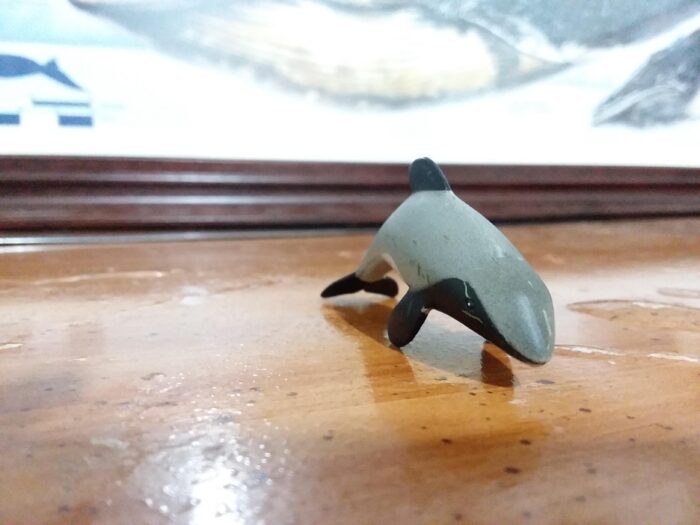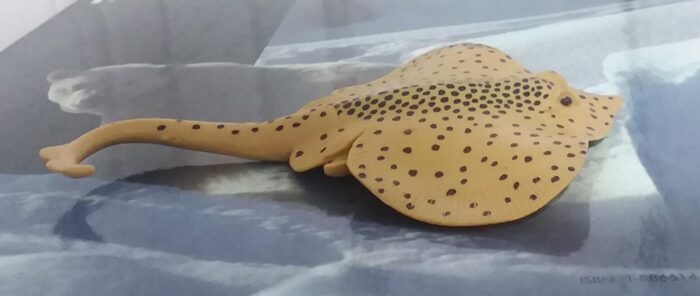There are many iterations of a fabled, island-sized sea monster across various cultures, which were in no doubt inspired by early accounts of animals such as the blue whale (Balaenoptera musculus). Blue whales exist in all major oceans, but precise distributions are patchy and their migratory movements are poorly understood.
Author: Callmejoe3
All reviews by this author
Sei Whale (Wild Safari Sealife by Safari Ltd.)

5 (6 votes)
Off the Norwegian coasts, a species of whale is known to appear alongside schools of pollock, thus the sei whale (Balaenoptera borealis) is aptly named the ”pollock whale” in their language. Though recent genetic studies warrant the revision of the Balaenoptera genus, data shows that the sei whale is the blue whale’s (B.
Muskox, 2004 (Wild Life Arctic and Antarctic by Schleich)

3.3 (3 votes)
Within the Bovidae family, among the most interesting may be the last of the ovibovines, the muskox (Ovibovis moschatus). The muskox’s name is misleading, as it’s actually a closer relative of sheep and goats rather than cattle. The name refers to the musk emitted by males during seasonal rut, which serves to attract females.
Devil Fish/Skate (AAA)

3.8 (5 votes)
This Saturday, shark week will take a slight detour into skates, covering this alleged ”Devil Fish”. Skates are the group of batoids belonging to the Rajiformes order. They appear to resemble sting rays but can be distinguished by their thicker and shorter tails that lack the venomous spines. Skates are found all across the world in both marine environments and even estuaries.
Humpback Whale, adult and calf (Monterey Bay Aquarium Collection by Safari Ltd.)
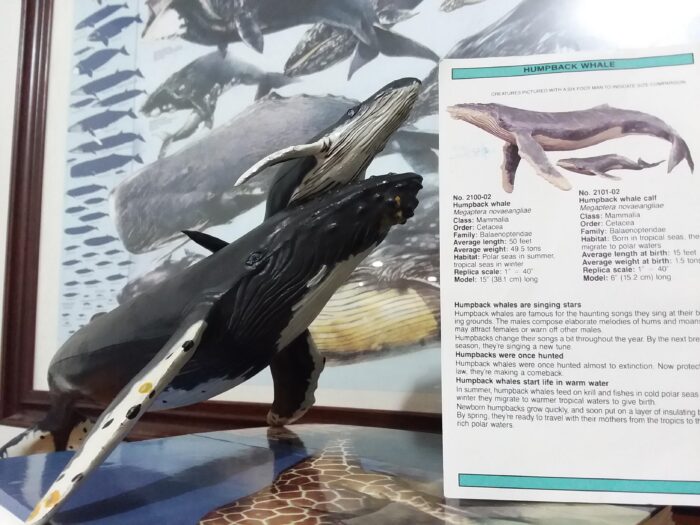
5 (9 votes)
The sounds of whales often fill the ambiance of the ocean, and none are more popular than the songs of the humpback whale (Megaptera novaeangliae). This species traditionally occupies the sole Balaenopterid genus outside of Balaenoptera, but molecular studies position the humpback as the closest relative of the fin whale (B.phylsaus), rendering Balaenoptera paraphyletic.
Sally Lightfoot Crab (Incredible Creatures by Safari Ltd.)
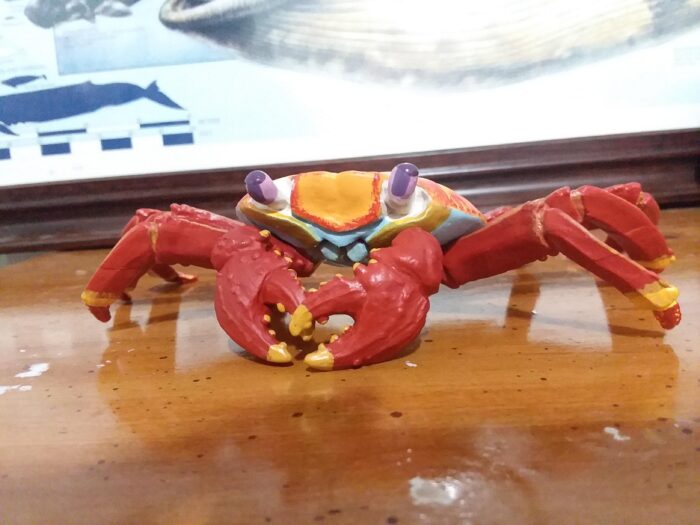
4.8 (4 votes)
If there’s any animal ready to jump in the line, it’s the Sally Lightfoot crab (Graspus graspus). Also known as the red rock crab, G.graspus belongs to the genus of ‘lightfoot crabs’ that are named such due to their rapid movements and ability to leap from rock to rock along the shorelines, with the ”Sally” rumored to have been named after a Caribbean dancer.
Bigeye Thresher Shark (Monterey Bay Aquarium Collection by Safari Ltd.)
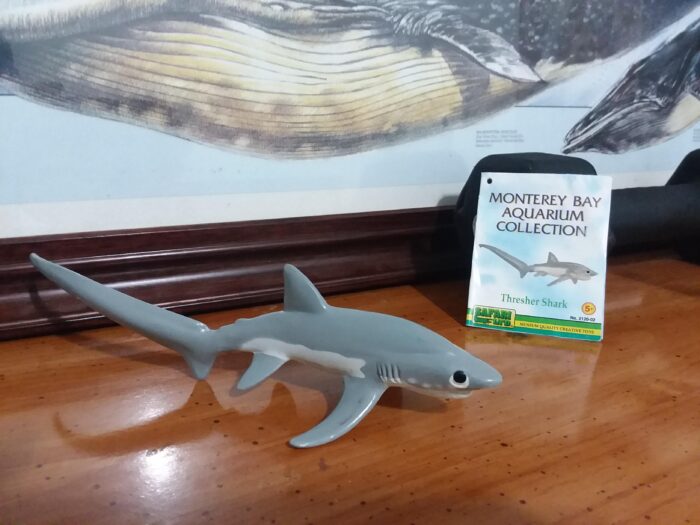
4.4 (5 votes)
Of the three species of thresher shark, the biggest outlier appears to be the bigeye thresher (Alopias superciliosus). The bigeye thresher and its close relatives belong to the order of mackerel sharks, Lamniformes. The bigeye thresher is found in tropical waters all across the world. This species inhabits deeper waters than its relatives, spending the day avoiding predators at depths of 300-500m and moving to the surface during the nighttime to hunt for prey.
Hector’s Dolphin (NZ Wildlife Figures Pack by Stewart Sales & Services)
Stingray (Animal Planet – Deep Sea Submarine Playset by Chap Mei)
Bowhead Whale (Wild Safari Sealife by Safari Ltd.)

3.6 (5 votes)
Today will be dedicated to the largest Arctic resident, the bowhead whale (Balaena mysticetus). When initially described by Linneaus in 1758, the bowhead whale was classified as the same species as other right whales (Eubalaena spp.). After decades of morphological and molecular studies, the bowhead was assigned to a separate genus within the shared family, Balaenidae.
Indian Elephants, 1998-2005 (Wild Life Asia and Australia by Schleich)
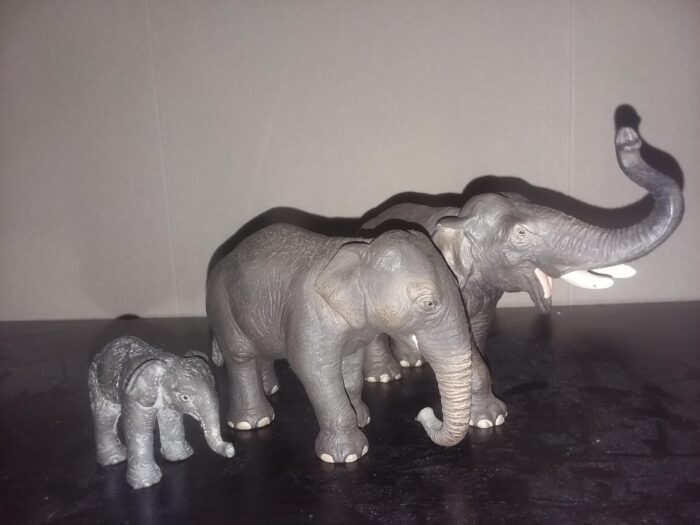
4.8 (4 votes)
Few animals encountered over the course of human history have a superlative reputation like elephants, especially the Asian elephant (Elephas maximus). Asian elephants are the only extant species within their genus and one of 3 living species of elephants, though Asian elephants are much more closely related to mammoths than they are to African elephants (Loxodon spp.
Narwhal (Monterey Bay Aquarium Collection by Safari Ltd.)

4.4 (5 votes)
For me, there are not many ”normal” whale species. Most either look normal until you learn more about them or openly advertise their weirdness like the narwhal (Monodon monoceros). The narwhal is the only extant member of its genus and its closest relative is the beluga (Delphinapterus leucas), both belonging to the Monodontidae family.





